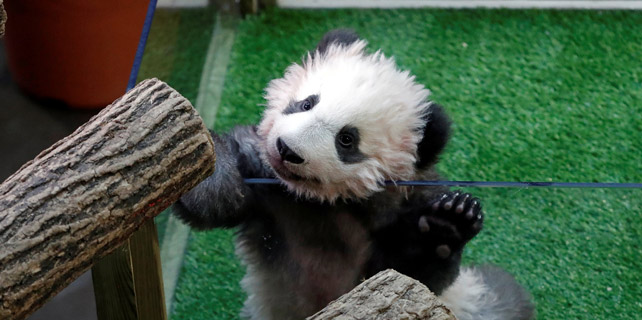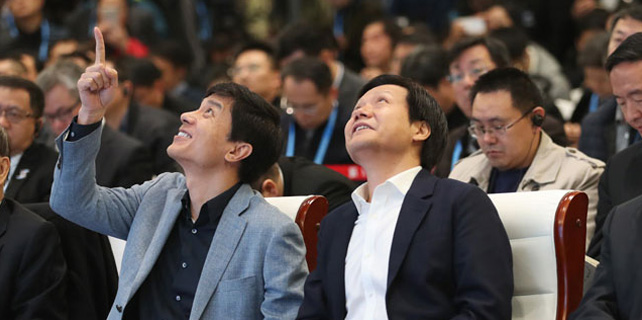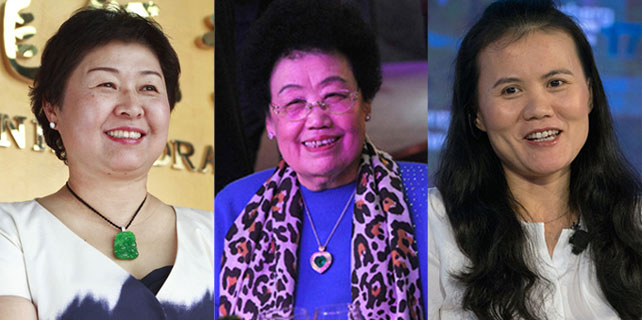New year brings luxury sales challenges
European brands must know their Chinese customers and keep ahead of the trends if they hope to expand their markets
The new year is well underway, and Chinese Lunar New Year, the Year of the Dog, will soon be upon us. What do these calendar events signify for Chinese luxury consumers?
The Chinese mainland market continues to provide substantial opportunities for the world's major luxury brands, most of which are European. But recent reports, as well my ongoing research, continue to reveal significant changes in the mindset and shopping needs of the typical Chinese luxury consumer.

Overall, the typical Chinese luxury consumer is becoming far more independent, discerning and rational during all stages of the consumption process. Specifically, three trends should be taken seriously by the European luxury sector when deciding on any revisions in their Chinese mainland marketing strategy:
1.Being environmentally friendly

With pollution levels still high, particularly in the more affluent, luxury-consuming first-tier cities, it should come as little surprise to the European luxury sector that purchases considered greener are appealing more and more to the typical Chinese luxury consumer. The days of naked elitism under-pinning the motivation behind luxury purchases are going. Quality of life and overall happiness now go further in explaining choices of luxury brands, and any offer considered particularly ethical ranks higher. So apparent is this change that major European fashion group Kering, whose portfolio of global fashion brands boasts the likes of Gucci, Yves Saint Laurent and Balenciaga, recently launched a mini-program on Chinese social media platform WeChat, called EP&L (environment profit and loss). EP&L allows Chinese luxury consumers to assess the environmental impact of their choice of brand. The program reveals both source and type of material as well as place of production, and enables the consumer to assess the full environmental cost of any purchase under consideration. Chinese consumers consider a lower environmental cost well worth paying for.
2.Societal pressure no longer fuel for material gain
More and more research studies, including my own, appear to highlight a decline in conspicuous luxury consumption, especially among younger Chinese. It may be that pressure to achieve and display such achievement via the possession of a range of exclusive luxury brands, from cars to clothing and beyond, has "crested" and Chinese consumers now value a different lifestyle. The European luxury sector should not confuse this change with any consequential decline in desire for their luxury brands. Far from it. But it probably means their marketing strategies now need to emphasize "escape", "relaxation" and even "playfulness" rather than relying on "power" and "status".
An enhanced retail experience, where consumers are not only entertained more but also taken outside of their usual space, could go some way toward achieving this much-needed luxury brand repositioning across the Chinese mainland marketplace.
Avant-garde "athleisure" brand Lululemon has recently set a good example with tangible evidence of a far more experiential retail environment. At the Lululemon Lab store in New York, which opened last year, fashion designers and their working space are as much a part of the store as the clothes on sale, creating a relaxing and engaging retail experience. Lululemon has also been one of the first brands to invite consumers to participate in group yoga and meditation activities as part of the in-store experience. European luxury producers should follow suit - and soon.
3.The tech-savvy Chinese luxury consumer
The in-store experience, probably via fewer but larger flagship stores, will always play a vital role in consumption choice and decision-making, but Chinese consumers increasingly value the speed and convenience of online search, selection and even purchase. Mobile devices have raced ahead - so much so that a whopping 85 percent of all purchases made in China during Singles Day (Nov 11) last year were carried out on mobile devices. E-commerce make way for m-commerce.
Interaction via mobile devices on Chinese social media platforms such as Sina Weibo, and particularly WeChat, has become part of everyday life in China. WeChat now boasts a staggering 900 million, active users. Social media presence is, therefore, essential for any current or aspiring European luxury brand in China. Livestreaming and videos are also expected by increasingly tech-savvy consumers.
In 2017, an incredible 87 percent of Chinese consumers in first-tier cities opted for payment via mobile devices, up from 69 percent in 2016.
Not only is payment via mobile device much preferred in China but automation of more and more of the entire in-store experience could also soon be welcomed by Chinese consumers. For example, Chinese retail giant JD.com recently tried an unmanned store in Beijing and announced plans to roll out hundreds more of such stores across the Chinese mainland. Facial recognition technology gives consumers a more convenient product search, selection and payment process with zero checkout waiting time.
The European luxury sectors should, as well as developing a more effective social media presence, also seek innovative ways of enhancing their China sales with the use of virtual reality and augmented reality, integrated with mobile platforms.
European luxury brands typically have a weak presence on Chinese social media and need to address this quickly. Integration of offline and online offering is an essential part of any Chinese marketplace presence. Europe's leading luxury brand producers need to do more - and soon.
The typical Chinese luxury clothing consumer seeks an increasingly eclectic range of styles, designs and even color combinations, and the technology needs to be in place so that consumers can consider purchase combinations via mobile platforms.
Going forward into 2018, changes in the Chinese luxury consumer's mindset could also lead to the increasing appeal of Chinese elements incorporated into luxury product design. Such elements could include signs and symbols that evoke a strong sense of nostalgic pride, but European brands probably need to leave this to Chinese fashion designers, who need to work closer with their European counterparts.
The European luxury fashion design team of the future, therefore, needs to foster a fusion of European and Chinese elements in order to achieve sustained success across the Chinese mainland.
The European luxury sector should also consider more long-term alliances with suitable Chinese luxury industry players. Going it alone will no longer guarantee success - such is the changing nature of the China market.
In summary, only those European luxury brands that integrate fully with the Chinese fashion industry and, in so doing, develop an intimate understanding of the Chinese luxury consumer, will enjoy longterm success in this vital market.
The author is a visiting professor at the University of International Business and Economics in Beijing and a senior lecturer at Southampton University. The views do not necessarily reflect those of China Daily.
( China Daily European Weekly 02/02/2018 page10)


















